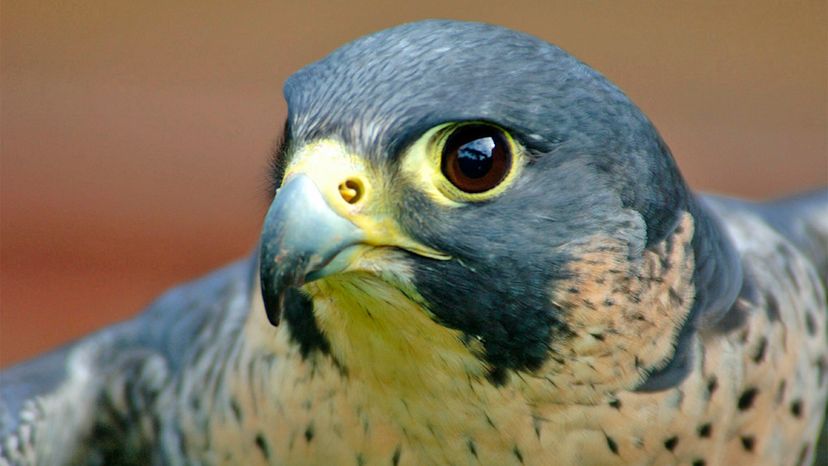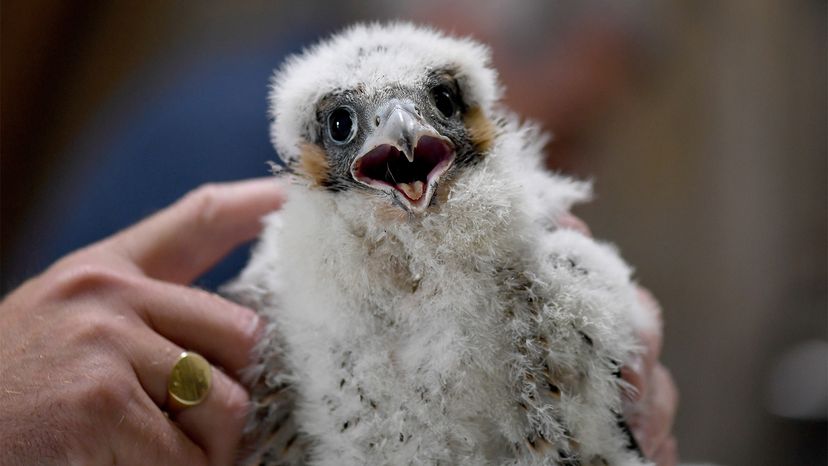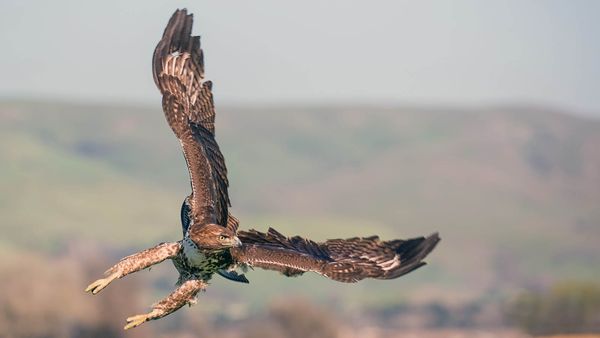
Key Takeaways
- Peregrine falcons are the fastest birds, reaching speeds of over 200 mph (322 km/h) during hunting dives, thanks to their aerodynamic bodies and specialized anatomy.
- They primarily hunt other birds mid-air using strong talons and excellent eyesight, and they often dismember their prey in flight.
- Peregrine falcons mate for life, returning to the same nesting spot each year, and are a protected species in the U.S., with ownership restricted to licensed falconers.
In 2005, a fellow named Ken Franklin of Friday Harbor, Washington, used a computer chip to clock the diving speed of one of the peregrine falcons he owned — "Frightful," a 6-year-old bird weighing in at a little over 2 pounds (0.9 kilogram). The result? The bird dove after prey from about 3 miles (5 kilometers) in the air at a speed of 242 mph (389 kph), and with the speedy swoop broke a Guinness World Record for the fastest dive by a bird, making the peregrine falcon one of the world's fastest animals.
Referred to as global birds, the peregrine falcon (Falco peregrinus) can be spotted on every continent except Antarctica, traveling long distances (peregrinus means traveler in Latin) between their wintering and breeding grounds. North American peregrine falcons can be migratory or non-migratory, with some residing year-round in Alaska, the Midwest, Northeast, Southwest and along the Western Coast, while others migrate annually from South America and the Gulf Coast to the Alaskan tundra.
Advertisement
"They prefer wide-open spaces, and do well near coasts where shorebirds are common, but can be found from the tundra to deserts to forests," says Rick Schwartz, San Diego Zoo Global Ambassador, in an email interview. "They are strong, efficient flyers and skilled at catching a variety of prey. This versatility allows them to live in almost any type of climate and habitat. Basically, they can live wherever they can find food."
Among the identifying characteristics of these raptors (or birds of prey): "Peregrine falcons are the largest falcon over most of the North American continent, with long, pointed wings and a long tail," says Schwartz. "Adults are blue-gray above, with their underside having alternate bands of colors and a dark head with thick sideburns. They have sharp, yellow talons to catch their prey, and as with most raptors, males are smaller than females. The average peregrine falcon weighs from 1 to 3.5 pounds (0.4 to 1.6 kilograms), has a wingspan of 31 to 48 inches (79 to 122 centimeters) and an average body length of 13 to 20 inches (33 to 51 centimeters).

Advertisement


